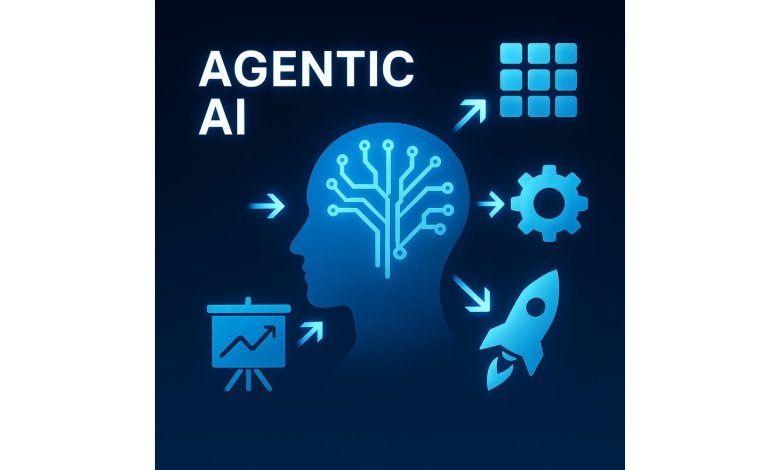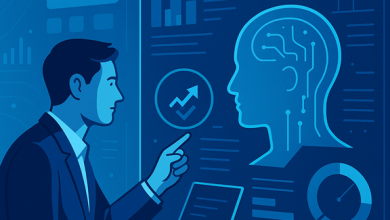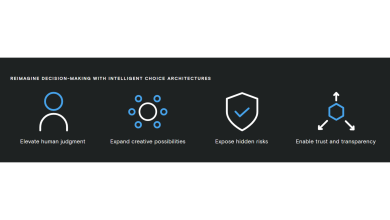
Chances are, you’ve heard or read about agentic AI. If you’re a security leader, you’ve probably been considering implementing it in your SOC. That’s a good instinct.
However, it’s important not to get ahead of yourself; successful implementation relies on a deep understanding of the technology and how it can integrate into your security workflows. Gartner predicts that over 40% of agentic AI projects will be cancelled by the end of 2027 – you don’t want to contribute to that number.
In this blog, we’ll break down everything you need to know ahead of agentic SOC implementation: architecture, deployment strategy, integration requirements, organizational considerations, risk mitigation, and what to look for in an effective solution.
Agentic AI: A Quick Primer
To understand agentic AI, you first need to understand AI agents.
AI agents are autonomous software agents – AI that can act of its own accord – that perceive their environment, reason about it, and act towards goals. Agentic AI is the system that coordinates these agents, allowing them to operate effectively, collaborate, and adapt in dynamic environments – like a SOC.
Agentic AI architecture consists of components that enable agency and grant agentic AI systems autonomy:
- Intentionality
- Forethought
- Self-reactiveness
- Self-reflectiveness
These components, in turn, rely on backend tool calling to gather information, optimize complex workflows, and automatically generate tasks to achieve goals. And, crucially, the agentic system learns from environmental factors to improve over time.
What to Look for in an Agentic AI Solution
Now that you, at least at a high level, understand what agentic AI is and how it works, you can start thinking about purchasing a solution. But be warned: there’s danger in them there hills.
Stunningly, Gartner estimates that, of the 1000s of agentic AI vendors, only around 130 are actually delivering agentic solutions. The rest are merely agent washing, rebranding existing products, such as AI assistants, robotic process automation (RPA), and chatbots.
So, what should you look for in an agentic AI SecOps platform?
Proven SecOps Expertise, Built In
An agentic AI SOC platform essentially acts as a junior analyst, so they should act the way your analysts would. Look for platforms developed from:
- Extensive incident response expertise
- Operational methodologies focused on detection and response
- Automated triage plans and investigation strategy
Put simply, if the system cannot investigate suspicious Nmap scan from alert to response, it’s not purpose-built for security operations.
Unified Visibility Across Security Tools
Agentic systems need a normalized view of security data to do their job. If a vendor requires you to rebuild or rip-and-replace your existing security stack, that’s a red flag. The right solution will:
- Normalize data across all existing platforms
- Pull context from multiple tools in real time
- Enable true cross-platform visibility immediately
Agents can’t act autonomously if they’re blind to half your environments. Your AI must adapt to your tools, not the other way around.
Analyst-Level Reasoning and Adaptability
Reasoning and adaptability are what differentiate agentic AI from traditional AI. If the platform can’t re-plan as situations change, it’s not agentic AI, it’s agent washing. That means, for example, updating investigation paths as new information arrives. That’s the difference between workflow automation and actual autonomy.
Built-In Guardrails to Ensure Secure Autonomy
Agentic systems make crucial security decisions. That means every autonomous action must be governed like an analyst with elevated access – because that’s essentially what they are.
Only consider platforms that:
- Post-generation validation
- Strict role-based access control
- Audit trails on every action
- Human escalation for high-impact decisions
It’s not enough for AI to act fast. It must act accurately, transparently, and within verified boundaries at all times. If not, agentic systems can do more harm than good.
Continuous Learning, Guided by Humans
By their nature, agentic systems learn from human feedback and real-world scenarios. If they don’t, they’re not agentic. The best solutions:
- Incorporate reinforcement learning from human feedback
- Improve decision quality with every interaction
- Reduce false positives over time
How to Implement Agentic AI in Your SOC
And with that, finally, we get to implementation.
Agentic AI will change how your SOC operates, so expect some friction. New workflows expose gaps, shift responsibilities, and require analysts to trust automation. The goal is to anticipate these challenges early – clarifying ownership, setting expectations, and putting safeguards in place before anything goes live.
Start with a repetitive, measurable workflow like alert triage to prove value quickly and avoid risk. And remember: your chosen platform needs visibility across your existing tools, so it should adapt to your environment.
You should also establish guardrails from the start. Role-based access, confidence thresholds, and audit trails ensure autonomy doesn’t compromise control. Keep humans in the loop initially, then move to execution once the platform has consistently demonstrated accuracy.
Finally, keep measurement grounded and performance-driven. Don’t get excited about the possibilities, track how much noise is reduced, how much investigation time is saved, and how often the agent reaches the right decision. Only scale when the data proves what the technology is delivering.
Choose the Right Solution, Unlock Agentic Benefits
If you choose an agentic AI platform built on real SecOps expertise, can see across your entire tooling ecosystem from day one. With a solution that has guardrails and continuous learning baked into every decision, you’re set up for success. Following these best practices should help you anticipate any problems and make implementation a breeze.
The ultimate benefit? AI takes on repetitive implementation work, accuracy improves over time, your analysts stay in control, and your SOC becomes faster and more resilient as threats evolve.
Author’s Bio
Josh is a Content writer at Bora. He graduated with a degree in Journalism in 2021 and has a background in cybersecurity PR. He’s written on a wide range of topics, from AI to Zero Trust, and is particularly interested in the impacts of cybersecurity on the wider economy.



